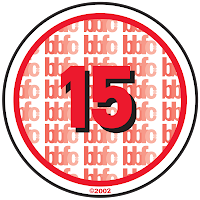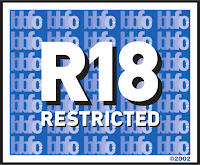To decide the target audience of our
film, we carried out lots of research into the audience. We carried out
research into the following psychographic groups:
After carrying out this research, we have decided that those who are
Explorers and Resigned would most want to watch our film. This is because they
are most likely to be the sort of people who like adventure and action, which
is something that is included in our production.
 Our research told us many things. Firstly, 31.25% of our audience like
films which include an element of comedy, and this is something that we could
try and include in our film, if we were given the opportunity to continue
production. Furthermore, people also go to the cinema quite regularly, so our
production company should be able to get the film into UK cinemas, as well as
producing it on DVD.
Our research told us many things. Firstly, 31.25% of our audience like
films which include an element of comedy, and this is something that we could
try and include in our film, if we were given the opportunity to continue
production. Furthermore, people also go to the cinema quite regularly, so our
production company should be able to get the film into UK cinemas, as well as
producing it on DVD.  Also, our audience, especially boys, expect death to be something that
is included in the film. In fact, 100% of our audience likes films that involve
death, which shows us that both males and females like to watch films that
include this sort of content. With this in mind, we decided that the victim
should be killed by the train. Our research also told us that they like a plot
where they have to concentrate on the plot, which is why we decided that the
narration would not give too much information away, and so the plot becomes
clear as the film develops.
Also, our audience, especially boys, expect death to be something that
is included in the film. In fact, 100% of our audience likes films that involve
death, which shows us that both males and females like to watch films that
include this sort of content. With this in mind, we decided that the victim
should be killed by the train. Our research also told us that they like a plot
where they have to concentrate on the plot, which is why we decided that the
narration would not give too much information away, and so the plot becomes
clear as the film develops.  The British Board of
Film Classification (BBFC) are an independent body of people, not linked to the
government, who provide legal classification for films sold in the UK. The body
is designed to bring a degree of uniformity to the film classification
industry, and although local councils can override decisions made by the body,
their decision is often respected.
The British Board of
Film Classification (BBFC) are an independent body of people, not linked to the
government, who provide legal classification for films sold in the UK. The body
is designed to bring a degree of uniformity to the film classification
industry, and although local councils can override decisions made by the body,
their decision is often respected.
Each film submitted for certification by the BBFC is assessed by at
least two examiners. Usually, the examiners are able to come to a decision
about a film, but if disagreement or complex policies are included, then a
decision may have to be made by senior directors. Examines focus on issues such
as language, sexuality, nudity, discrimination, drugs, behaviour that can be
copied, horror, violence and theme when making their decision, the context is
something that is carefully considered. For example, if it is important to show
nudity for educational purposes, then the film would usually be given a lower
classification. The release format is often considered, as if a film is
released on DVD or film, then there is a higher opportunity for underage or
repeated viewing.
BBFC examiners have seven different classification certificates
available to issue, and these are listed and detailed below:
· U– Universal, meaning
that the film is suitable for all age groups. It is advised that the films are
set within a positive moral framework, and that violence or horror should be
reassuringly counterbalanced. Discrimination is not permitted, and only infrequent
and innocuous reference to drugs and alcohol may be used. Films should only
contain brief and mild scenes of horror, and none of the behaviour or actions
in the film may be copied. No sexual content may be displayed, and only
occasional natural nudity is permitted.
 · PG– parental guidance,
meaning that some scenes may require advice and support from parents or
guardians. Generally, these films should not disturb children over eight years
of age, but parents should consider if sensitive children may be disturbed. If
reference to drugs is mentioned, a relevant anti-drug message should be
carried, and horror sequences should not be prolonged or intense. Only mild bad
language should be included, and sexual activity can only be implied. Moderate
violence, if justifiable, is allowed.
· PG– parental guidance,
meaning that some scenes may require advice and support from parents or
guardians. Generally, these films should not disturb children over eight years
of age, but parents should consider if sensitive children may be disturbed. If
reference to drugs is mentioned, a relevant anti-drug message should be
carried, and horror sequences should not be prolonged or intense. Only mild bad
language should be included, and sexual activity can only be implied. Moderate
violence, if justifiable, is allowed.
· 12/12A– exactly the
same criteria is used for both 12 and 12 A films, although 12A certificates are
issued for films in cinemas, where no-one under this age is permitted to watch.
Discriminatory work must not be endorsed by the films message. Drug use should
be infrequent, and instructional details should not be given. The film should
not dwell on behaviours that can be copied by the audience, and the use of
moderate language is allowed, although its use should be infrequent. Sexual
references can be briefly portrayed, although the activity should not go beyond
what is suitable for young teenagers. Moderate violence is allowed, although it
should not dwell on gory details

· 15– Discriminatory
language or behaviour must not be endorsed, and drug misuse can be shown,
although the misuse should not be endorsed. Dangerous behaviours (such as
hangings) should not dwell on details which can be copied, and frequent use of
strong language is allowed. Aggressive or repeated use of strong language
should not be encouraged. There are no constraints on nudity in an educational
setting, and violence may be strong, and should not dwell on the infliction of
injury.
· 18– 18 films usually
observe the fact that adults should be free to choose their own entertainment.
Therefore, films will only not be granted licence when the material has been
created through breach of a law, where material appears to risk harm to
individuals or the public through the imitation of behaviour, and where the use
of explicit images cannot be justified by the context.
 · R18– can be shown only in specially licenced cinemas, or supplied in
specially licenced shops. The following is not acceptable: material that is in
breach of criminal law, obscene material, material likely to encourage an
interest in sexually abusive activities such as rape, the portrayal of sexual
activity which does not include consent, the infliction of pain, the
penetration of any object associated with harm, or any sexual threats or
humiliation which do not clearly define part of the plot.
· R18– can be shown only in specially licenced cinemas, or supplied in
specially licenced shops. The following is not acceptable: material that is in
breach of criminal law, obscene material, material likely to encourage an
interest in sexually abusive activities such as rape, the portrayal of sexual
activity which does not include consent, the infliction of pain, the
penetration of any object associated with harm, or any sexual threats or
humiliation which do not clearly define part of the plot. From the research I have carried out, I can therefore see that thriller films are usually given one of the higher rating available by the BBFC, because of the content included, which includes violence, strong language and nudity, that makes them a thriller film. This tells me that Thriller films are likely to only be suitable for older, more mature audiences, and therefore we should target our film at older viewers.
I feel that if we were planning on submitting our thriller to the BBFC, we should be aiming to receive a 15 certificate. This is because of the fact that we are implying someone will be killed in our film, which would be classed as moderate use of violence. This also fits in with our target audience, which we would anticipate would be between ages 15-30. However, our film will not contain any sexual references or scenes, and no strong language will be used, which is why I believe that it would not be appropriate for 18 classifications. However, our film contains some mature themes, such as the idea of death and murder, which would not be appropriate for younger audiences, in my opinion. Our 15 classification meant that we focused some of the themes and issues people of this age face. For example, they may be facing a situation where one sibling/cousin is treated better than another due to favouritism, and I feel that our film would appropriately address these issues, whilst ensuring that the way they are presented is appropriate for the audience.




No comments:
Post a Comment